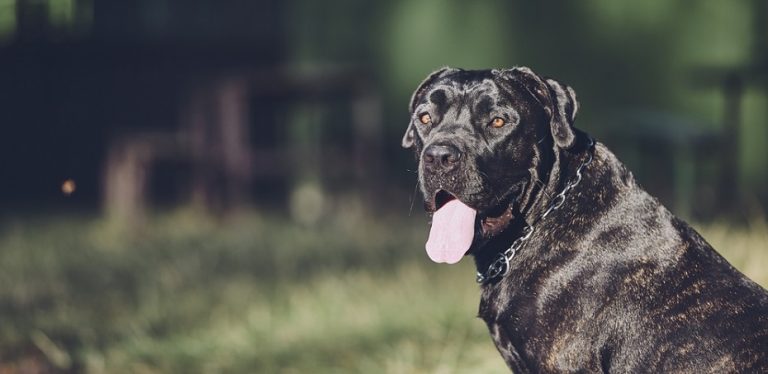How Do You Know When Dachshund Adults Have Matured?
Have you recently got your very own Dachshund puppy? If you’ve got children of your own or simply know someone who does, we’re sure that you might be familiar with the term “They grow up way too fast!”
Well, while that might very well feel like the case when it comes to cute little Dachshunds – this statement rings all too true.
Newborn Dachshunds are tiny as can be. But, in just a blink of an eye – your adorable little Dachshund will soon be an adult. Dachsunds reach physical maturity by the first year. His skeletal system is fully developed, and the muscles are in good condition.
When that time comes, it’ll serve you very well to make sure that you’re familiar with the various changes that can occur during this time, not only to ensure you’re the best dog owner you can be but also to help your Dachshund transition from baby to adult.
But how can you tell when a Dachshund has reached maturity? If you’re currently asking yourself this question, rest assured that you have come to the right place.
This post will take a closer look at some telltale signs that your Dachshund has reached full maturity. Whenever you’re ready, just read on.
When Does A Dachshund Reach Full Maturity? Fast Facts
If you don’t have enough time to read through the entirety of this article, no problem! Below, we are going to be providing you with a quick summary of some of the main signs that a Dachshund reaches adult maturity:
Size Increase
This is one of the most obvious signs that your dog is reaching or has reached maturity. On average, an adult Dachshund will typically grow to standard sizes and around 16 to 32 pounds.
Baby Teeth Have Gone
This is another clear indication that your Doxie has become an adult! They will have lost all of their baby teeth and replaced them with adult teeth, just like we humans do.
Diet Change
This is a more subtle difference that not all Dachshund owners will pick up on immediately. However, when a Doxie dog starts to reach or has reached full maturity, they will typically eat less or enjoy different foods than those they ate as a pup or adolescent.
Adult Coat Comes In
Have you ever noticed that most puppies, regardless of their breed, tend to be fluffy and super soft? Well, more often than not, this fluffy coat will typically change and become more coarse as they become an adult – and Doxie dogs are no exception to this.
Temperament Changes
Often, when a dog is just a puppy or adolescent, they will be full of energy! However, as they reach adulthood, you should notice that their temperament becomes calmer.
Sexual Maturity Occurs
When your dog has reached sexual maturity, it will clearly indicate that they have reached adulthood.
They Stop Growing
Here’s another strong indication that your Dachshund has reached adult maturity. During the puppy and adolescent stages, Doxie’s will grow pretty rapidly. However, they will stop growing as soon as they become adults.
Of course, it’s important to remember that these are just some of the most obvious signs that a dog has reached full maturity.
If you are unsure of whether or not your Doxie has reached adulthood or you’re worried that they might not be developing in the way that they should be, then we strongly urge you to make sure that you take your dog to the veterinarian, who will be able to provide you with their medical and professional opinion on the growth and development of your Dachshund dog.
All that being said, now that we have covered some of the most obvious signs that a dog has reached adulthood, we will be taking a closer look at how a Dachshund pup develops into adulthood.
This will help you understand how your dog is growing while also ensuring that you can successfully support your little Dachshund as they transition from a puppy to adolescence and into adulthood.
Dachshunds Develop Full Coordination Skills During Their First 12 Months
If you’ve recently got an adorable Doxie dog, then we’re sure that you’ll be in complete agreement with us when we say that, besides being full of energy and totally adorable, these dogs are known for being pretty darn clumsy.
You may have noticed that your Doxie often trips during playtime or stumbles over their paws when working up a sweat at the local dog walking park. Dachshunds are characteristically known for being one of the more clumsy breeds of dog, especially during the puppy stage as well as the adolescent stage, too.
However, it is important to note that Doxies often develop full coordination during their first 12 months of life.
At this stage (1 year old), you should notice that, among other things, your Dachshund has an increased sense of awareness while also having much more control of their body.
As well as this, you should also notice that your Dachshund is a lot more alert and aware of its surroundings while appearing far more coordinated with a natural, balanced gait regardless of whether they’re walking, running or playing.
As Doxies need around 12 months to develop their body coordination, it’s a good idea to wait until the 1-year mark before you attempt to teach your Doxie any complicated tricks or commands.
This is because your Doxie might struggle to pick up what you are trying to teach simply because they have not yet fully developed their coordination abilities.
Dachshunds Often Experience Temperament Changes During The Transition Into Adulthood
Even though we have briefly touched upon this point above, we still think it is important to mention it here.
Even though all dogs will naturally experience temperament and behavioral changes as they transition from adolescence into adulthood – Dachshunds tend to experience more changes than other types of dogs.
So, what will happen when your Doxie dog becomes bigger and starts transitioning into adulthood?
When your Dachshund dog begins to grow, you should start to find that your Daschund displays various behavioral changes along with the more obvious physical changes.
As we have mentioned above, many puppies (regardless of their breed) often tend to be full of bounds and bounds of energy as they are puppies and then adolescents.
However, once they reach adulthood, you will often find that adult dogs tend to be calmer and more relaxed.
In the case of Dachshund dogs, it is important to note that this is a time in which you might discover that your dog is trying to challenge your authority.
This is totally normal and to be expected, as Doxie dogs are known for their strong will and desire to be, quite literally, the top dog.
During this timeframe, when your Doxie is reaching adulthood and beginning to display these behaviors, it is a good idea to make sure that you are gently discipling your dog to make sure that you are in control.
It is also important to note that biting might also be a potential problem you must deal with once your Doxie has reached full maturity.
Again, it is important to remember that these behaviors are naturally in a dog’s nature, which means that you will need to make sure that you are preparing for this to prevent it from becoming an issue.
In particular, due to the independent and strong wills of Doxie dogs, there is a higher chance that aggression could potentially occur when dealing with strangers.
Plus, since adult Dachshunds often tend to have a lot of energy (even when they become adults), it is important to also keep in mind that they might display these types of negative behaviors if they are bored or aren’t getting enough stimulation.
For this reason, you’re going to want to make sure that your adult Doxie is getting plenty of socialization (with strangers and people that they are familiar with, including dogs) as well as ensuring that they are getting lots of exercise and playtime.
Dachshunds Will Typically Reach Sexual Maturity In The First Year
Along with temperament changes, it is also important to note that once your Dachshund has reached physical maturity, they will also typically reach sexual maturity.
More often than not, it is common for Dachshunds to reach sexual maturity at around the 12-month mark, although it is worth keeping in mind that there are a variety of factors that influence this, so this timeframe might occur sooner or later than the 12-month mark.

With that being said, even though there are many different breeds o dogs that experience sexual maturity at different stages – it is highly common for most Dashunds to experience sexual maturity at the one-year mark.
Due to this, if you have a male Dachshund, you will likely notice certain behavioral changes, and if you have a female Dachshund, you will notice that she brings her menstrual cycle.
As we’ve mentioned above, this is normal at around the one-year mark for your Dachshund and will typically coincide with them reaching full adult maturity, too.
For this reason, if you have noticed that your dog has reached sexual maturity, then this is a clear indication that your dog has become an adult, too.
Adult Dachshunds Will Typically Grow To Be Standard Sized, but Some Can Be Miniature
If you’ve already got your own Daschund pup, then we’re sure you’ll already know which type of Doxie you have.
Regardless of whether you have your own Dachshund already or you’re thinking of getting one, it’s important to make sure that you are taking the time to familiarize yourself what which type of Dachshund that you have, as this will help to make sure that you are going to be able to spot when your particular dog has reached adulthood.
Most Dachshunds typically come in standard breed sizes. However, there is a slight variation of this breed standard, which is why some Dachshunds will only grow to be miniature in size – even once they have reached adulthood.
By making sure that you have familiarized yourself with which type of Dachshund you have (or are thinking about getting), you will help to make sure that you are going to be able to better understand the telltale signs that your Dachshund dog has reached full adult maturity.
Not only that, but knowing the specific type of dachshund breed variation you have will also ensure that you are going to be able to be the best owner you can possibly be to your four-legged pup.
As a side note here, if you are unsure of which type of Dachsund you have, you should be sure to take a look at the breeding papers that would have been given to you by the person you purchased your pup from.
How To Care For Your Adult Dachshund
Now that we’ve covered the main signs that your dog has reached adulthood, as well as taking a closer look at the unique way that Dachshunds transition from adolescence to adulthood – we are now going to be taking a closer look at the best ways that you will be able to care for your grown-up Doxie, too.
Make Sure Your Dog Gets Plenty Of Exercise
So, while this one should certainly go without saying, we still consider this an important factor to note. The Dachshund is a very active dog with short legs. They are some of the most energetic breeds of dog in the world – and their energy transitions with them as they switch from adolescence to adulthood.
For this reason, even though it is important to make sure that all types of dogs are getting the relevant amount of exercise – it is going to be very important to make sure that your doxie is getting all of the relevant physical exercise required each day; otherwise, you are more than likely going to find that your dog is exhibiting signs of boredom, anxiety, aggression and much more because they are not being allowed to move their bodies, run around and have fun.
It is also important to remember that Dachshunds are known for biting here and there due to their strong wills and energy.
With that being said, to ensure that you can keep these potentially negative behaviors at bay, you are going to want to make sure that you give your active dog plenty of time to run around, exercise and burn off energy each day.
If they exhibit any bad behaviors, consider dog training or introducing some kind of mental stimulation to ensure they aren’t bored and fall into destructive habits.
Adjust Diet As Needed
As we have already touched upon above, one of the biggest changes that a Dachshund will experience when they become an adult is the type of food they want to eat and require.
Once your Dahund has become an adult, it is only natural for their diet to change as they will have significantly changed in size to when they were puppies or adolescents.
Even though it is typically easy to adjust your doxie’s diet by yourself, if you are struggling with what food to give your dog, we recommend that you reach out to your veterinarian, as they will be able to give you the relevant information and advice for which type of food you should be giving your Doxie.
Feed your Dachshund a veterinarian-recommended diet that is healthy for your dog. You always want to review the ingredient list. The meat (fish, chicken, or beef) should be the first ingredient listed. You want to avoid dog food that contains mostly grain or corn-based filler because these aren’t healthy for your pup.
Avoid feeding your dog any table scraps. This can cause health problems like obesity and turn them into a picky eater. Most Dachshunds don’t actually crave human food. However, once they are given human food and are exposed to it, they may develop a taste for it.
Some vets may also recommend dog probiotics if your pup has a sensitive stomach or other digestive issues.
If your Dachshund has a history of food allergies, you want to consult with the vet about a well-balanced diet and how much food per serving you need to feed your dog at home. Some prefer homemade dog food. That way, you know exactly what ingredients are in your dog’s food and can narrow down what may be causing an allergic reaction.
Regularly Visit The Vet
Just like with all other dog breeds, there is always going to be a chance that your dog could potentially develop various health issues throughout their adult life.
In particular, Dachshunds are at a much greater risk of developing a variety of health problems through their adult lives, including heart disease, intervertebral disc disease, progressive retinal atrophy, and dry eye.
Of course, while it might not be necessary to make sure that you are taking your dog to the vet each and every week, you’re going to want to make sure that you are taking your dog for at least 2-3 annual visits to the vet to make sure that they are being checked regularly throughout the year.
Making sure that you are taking your dog to annual vet visits will not only ensure that you are the best dog owner that you can be, but it will also ensure that all potential health problems will have a much greater chance of being easily treated.
Provide Lots Of Socialization
Once your Dachshund has gone ahead and reached adulthood, you will want to ensure that your dog is getting plenty of exercise and socialization each day.
As we have mentioned briefly in a previous point, Doxies are known for having a lot of energy while also being very strong-willed.
For this reason, to make sure that your dog can channel their energy in a healthy way, it’s a good idea to make sure that they are regularly being socialized each week.
Besides providing them with the chance to run around and have fun, ensuring that your dog gets plenty of exercise each month will also help to ensure that potentially aggressive behaviors (such as biting) will have a much lower chance of happening as you will be making sure that your dog gets plenty of time to socialize with others each month.

Maintain Oral Health
Like we have already briefly touched upon above, one surefire sign that your dog will have reached adulthood is if they have lost all of their baby teeth.
As soon as their adult teeth have grown in, you will need to ensure that you are taking care of them by paying close attention to the oral health of your doxie.
Even though we might like to, it’s simply not possible to give our dogs toothbrushes and toothpaste to get their teeth sparkling white.
However, the good news is that there are a variety of simple and convenient ways that you will be able to help support the overall health of your dog’s teeth.
The best way to ensure that your Dachshund’s teeth remain healthy is by giving them dental chews and other dental foods or toys.
Provide A Safe Environment For Your Dog
This is another fantastic way that you will be able to best care for your doxie once they have reached adulthood.
A safe environment or “sanctuary” is highly recommended for your doxie dog because they are highly energetic and can often exhibit signs of anxiety.
For this reason, as soon as your doxie reaches adulthood (and even before that) will help to ensure that your dog has their own safe space that they will be able to retreat to should they feel distressed, scared or simply want to unwind.
Spend Quality Time Each Day
Last but certainly not least, when it comes to caring for your Dachshund dog as they transition into adulthood, it’s important to ensure that you spend lots of quality time with them each day.
This can be anything from going for a walk in the park to cuddling up on the sofa together while you watch some of your favorite shows after a long day at work.
As we have mentioned in previous points, Dachshunds are some of the most fiercely loyal and affectionate of all dogs – so they will need plenty of affection and attention to ensure they’re happy and healthy.
Along with this, it is also a good idea to make sure that other members of the household (or, at the very least, the people your dog is around the most) are spending time with your doxie to ensure they are happy, stimulated and enjoying plenty of socialization outside of you.
This will also help ensure that your Doxie does not get bored or frustrated throughout the day.
Feeding Schedule For Adult Dachsunds
Since adult Dachsunds don’t need a lot of fat, protein, or calories in their diet like they did when they were younger, you can feed them adult food when they turn one year old. A diet containing too many calories or fats can cause weight gain and lead to lower energy levels.
Around one year of age, your doxie can eat two times per day. A good feeding schedule would be once in the morning and once in the evening. You can review the pet food bag to see how much you should feed your dog based on weight.
Many adult Dachsunds can consume ½ a cup of food twice daily, which is equivalent to about 2.25 ounces.
What Is The Ideal Weight For Adult Dachsund Breed?
There are three sizes of Dachsund: standard Dachshund, miniature Dachsund, and kaninchen or rabbit. Since Dachsunds are small dogs, their ideal and healthy weight should be between 16 and 32 pounds once fully grown. A miniature Dachsund will weigh around 11 pounds or less.
How Can I Tell How Old My Dachshund Is?
The best way to determine the age of a Dachshund puppy is to look at their teeth. Puppy teeth typically erupt between three and six weeks; adult teeth appear between 12 and 16 weeks at the front of the mouth and 16 to 24 weeks at the back.
As your dog ages, there may also be a loss of hearing or vision, mobility issues, or pain. These can also help determine the approximate age of your Dachshund.
Finally, signs of graying is a good way to determine age also. Graying, especially on the muzzle, suggests your dog may be a mature adult dog.
The Bottom Line
There we have it! You’ve made it to the end of the article.
Now that you have taken the time to read through all of the above, we hope that you feel much more confident in identifying whether or not your Dachshund has reached full maturity.
As well as this, we hope this guide has helped you learn how you will support your doxie as they transition from a puppy, adolescence and then into adulthood.
Before you click off this article, why don’t you consider bookmarking this page?
That way, if you ever need to come back and refresh your knowledge on how to care for your adult Dachshund dog and tell whether or not your dog has reached adulthood, should you get any more, you will know exactly where to find us.
Thank you for reading. We hope this article has been useful to you!






